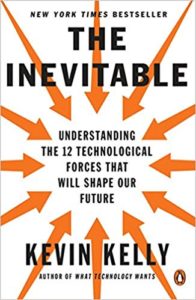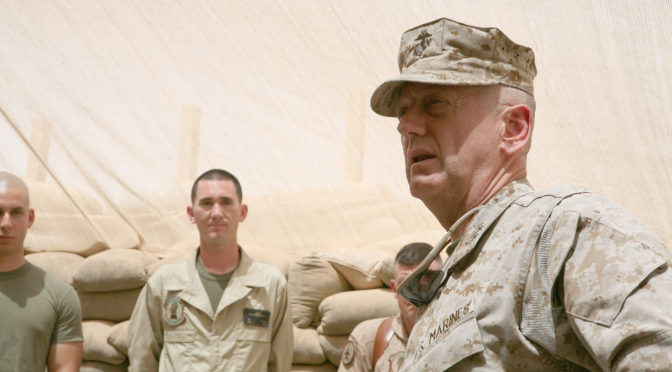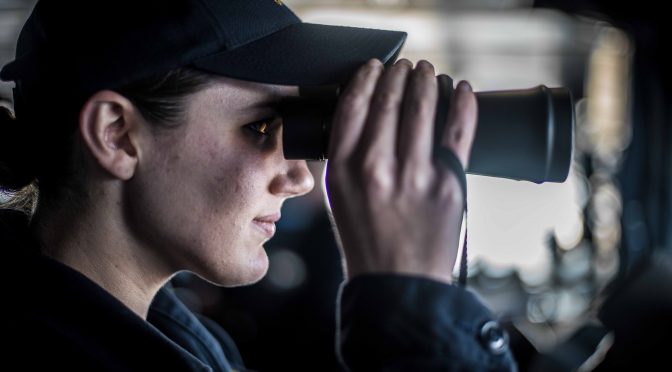By Christian Heller
Soon after a new year, it is worth considering again the forecasts of futurists and the impacts their predictions may have on the naval services. Predictions about the future of war have often been inaccurate and sometimes detrimental to military institutions. For instance, H.G. Wells correctly predicted the emergence of aviation and bombing, but incorrectly predicted widespread militarized societies and the willing capitulation of defeated combatants. Kori Schake explains this recurrence of failure: “Futurists of warfare suffer from the same failures of imagination that frequently shackle their brethren in other professions: They overemphasize present trends and assume that their society’s cultural norms will similarly bind their adversaries.”
Best-selling book lists are replete with futurologists and their latest texts about the changing decades of warfare ahead. Thinkers like Paul Scharre lead the way at the intersection of artificial intelligence and national security. The works of P.W. Singer and David Sanger are near canon for information and cyber warfare. Authors such as these are widely reviewed and familiar to many. Two lesser-known books about the overall changing trends in the world today are reviewed here to add a wider societal and cultural context to the rapidly advancing technologies the Navy and Marine Corps are adapting to. Both raise important questions not so much about the systems and weapons of the future services, but about the processes, interactions, societies, and operating environments of the next decades.
The Industries of the Future by Alec Ross
Alec Ross, a former State Department advisor to Secretary of State Hillary Clinton, wrote The Industries of the Future based largely on his travels and experience while working in government. As Secretary Clinton’s advisor for innovation, Ross identified and  assessed trends he saw emerging outside of the United States, most of which happened in disadvantaged countries. The topics of the book range from artificial intelligence and cybersecurity to genomics and education. Ross keeps the chapters in narrative form to talk about possible changes for governments and societies without distracting the reader with technical details.
assessed trends he saw emerging outside of the United States, most of which happened in disadvantaged countries. The topics of the book range from artificial intelligence and cybersecurity to genomics and education. Ross keeps the chapters in narrative form to talk about possible changes for governments and societies without distracting the reader with technical details.
Ross addresses how mobile phones and digital apps have accelerated the rates of development in poor nations by skipping entire phases such as hardwired telephone lines. He also repeats the common alarm about the security perils of digitization, and how all data-dependent systems are inherently vulnerable to cyberattack. One of Ross’s most interesting contributions is his insights into urbanization and innovation. Alongside their economic development, vibrant and growing cities are necessary centers of innovation due to their accumulation of financial and intellectual capital. Closed and authoritarian societies have largely forfeited their access to these potential innovation hubs. While countries like Saudi Arabia spend enormous amounts of money in grand projects to establish domestic ‘Silicon Valleys,’ Ross argues that societal features like cultural openness and independence from government censorship are some of the most important and underappreciated factors in technological advancement.
Ross also raises multiple issues which may influence the future Navy and Marine Corps. He highlights how advanced global data algorithms failed to correctly predict the scope of the Ebola outbreak in Africa because the programs could not monitor information in the local languages. This big data vulnerability could easily be at play in any of the Navy’s operational areas, and raises the importance of maintaining human oversight in intelligence and operational analysis. He also covers how smaller countries are making rapid advances in technology and innovation, like in Estonia where children learn to code and use robots in primary school.
Ross continues, “What I have seen in Africa makes me believe that industries of the future will have more broadly distributed centers of innovation and wealth creation than was the case in the past 20 years, when Silicon Valley dominated all comers.” This fact reinforces the observed changes to the Navy and Marine Corp’s future operating environment. Operational theaters of the future will be anything but vast, open expanses with freedom to maneuver and the ability to affect societies and geography how we see fit. Instead, the populations we fight amongst may very well be more advanced technologically than the Marines and Sailors deployed there. This dispersion of knowledge also means the dispersion of power, and the government and militaries which the U.S. has spent decades supporting and building relationships with may prove unreliable partners or outright antagonists in a time of conflict.
The Inevitable: Understanding The 12 Technological Forces That Will Shape Our Future by Kevin Kelly
Instead of focusing on case studies like Ross, Kevin Kelly, a co-founder of Wired, writes about 12 technological trends taking place amongst societies as a whole in The Inevitable: Understanding The 12 Technological Forces That Will Shape Our Future. Instead of pointing to specific outcomes or endpoints, Kelly describes the trends with verbs and points to how they are changing various facets of our lives. The chapters describe trends like “cognifying” (the addition of smart technology, artificial intelligence, and the cloud to everything), “flowing” (all information becomes non-stop, real-time, and on-demand), and “screening” (every surface is an interactive space of some sort and can change at our will).
to how they are changing various facets of our lives. The chapters describe trends like “cognifying” (the addition of smart technology, artificial intelligence, and the cloud to everything), “flowing” (all information becomes non-stop, real-time, and on-demand), and “screening” (every surface is an interactive space of some sort and can change at our will).
The Navy is already driving towards some of the trends which Kelly investigates.”Accessing,” or the trend of placing information and services in the cloud to be accessed anywhere at any time, is familiar to the force as it pursues cloud technologies. “Remixing,” i.e. breaking down existing products into individual pieces to re-assemble for new purposes, is familiar to any Sailor or Marine with Carrier Strike Group (CSG), Expeditionary Strike Group (ESG), or operational experience in which units are task-organized to meet combatant commander needs.
Other trends remain elusive from the naval services. Decentralized collaboration on a mass scale maximizes small group power, what Kelly dubs “Sharing,” is a perennial struggle for the Navy, Marine Corps, and other branches, and usually half-heartedly pursued in some form of enhanced integration or coordination. Such issues are natural in stove-piped bureaucracies, and the best efforts of the services to overcome them have had limited success. “Interacting” and changing how users engage with systems and computers, likely via augmented reality, is an exciting new area which has been pursued on a limited scale, primarily for training purposes.
“Questioning” builds off of the other existing trends to drive institutions and individuals forward. As artificial intelligence, cloud data, and increased networks make answers easily available, developing the right questions will become even more important for organizational development. It is in this trend that the Navy and Marine Corps are most seriously lacking. Some of the traits of a good question include “not concerned with a right answer…cannot be answered immediately…challenges existing answers…” Such questions drive real innovation. These traits are largely unfamiliar in an organization which prides itself on repeatable tasks and exercises with little time or resources for in-depth experimentation.
Some of the examples used in the book have direct pertinence to future military operations. The digitization of and access to information could reform professional military education (PME). Dematerialization, which is the lightening of objects as materials become lighter and more durable, will impact every facet of the military from Marines’ body armor to the airframes of naval aircraft. Blockchain technologies are already being researched for uses other than finance like communication networks and policy agreements. Future developments could play a major role in the next generation of naval information systems. Localized networks of cellphones (Kelly highlights FireChat) which can speak to each other directly can also provide a possible communications solution for operations in denied or degraded communications environments.
Two Takeaways from Two Books
The two most important questions these books raise for the Navy and Marine Corps are hinted at by Ross and highlighted by Kelly: Ross talks at length about decentralization and Kelly provides additional context. Kelly writes, “Community sharing can unleash astonishing power…The community’s collective influence is far out of proportion to the number of contributors. That is the whole point of social institutions: The sum outperforms the parts.” While no observer can argue that a group of individuals can equal the firepower or presence of a formal naval task force, the inability to mass cooperation or share information between commands, units, and fleets sustains situations like Afghanistan where two decades of war are split into 20 different one-year battles.
But is it possible to freelance or crowdsource security? In some context, partnerships and coalitions in places like the Arabian Gulf and Asia-Pacific do just that. On an administrative level, the ability to flexibly leverage the manpower of the reserves seems like a worthwhile goal. Establishing a program where reserves (or ex-military members with the requisite knowledge) can augment units on an ad hoc basis (see apps like Upwork or Taskrabbit) could greatly benefit the operational readiness of staffs by reducing the administrative burden placed upon commands.
Finally, a recurrent theme in both books is the future of world economies. Innovation, new technologies, and data are the lifeblood of future financial strength. In historic eras, navies were created to physically protect a nation’s flagged vessels as they traded around the world. If the future American economy involves a smaller portion of physical trade and relies instead on services and information, the Navy may need to re-think its role in the defense of these networks and institutions. While cyber policies and authorities have been assigned between military commands and civilian services, the Navy may need to continually refine its role if the defense and support of American trade is to remain a primary mission in the next era of warfare.
Christian Heller is a graduate of the U.S. Naval Academy and University of Oxford. He currently serves as an officer in the United States Marine Corps. Follow him on Twitter, @hellerch. The opinions represented are solely those of the author and do not represent the views of the United States Marine Corps, the Department of Defense, or the United States Government.
Featured Image: PACIFIC OCEAN (Dec. 20, 2016) Ensign Margaret Graves scans the horizon in the pilot house of the aircraft carrier USS Theodore Roosevelt (CVN 71). (U.S. Navy photo)






